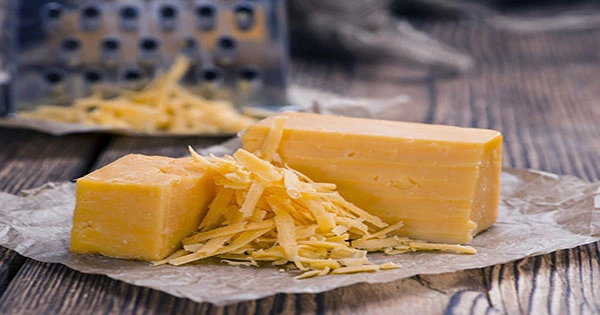The United States government has hidden a golden trove of 1.4 billion pounds of cheese a few hundred feet beneath Springfield, Missouri. Why? It’s a long story, to be sure. The Farmlink Project states that the strange roots of “Government Cheese” stretch back to the 1970s, when a dairy shortage and a 30% increase in the price of related items prompted a gold rush for cheese by the US government. With President Jimmy Carter at the helm, it was concluded that the best way to address the problem was to provide financial assistance to America’s dairy sector.
A $2 billion financial infusion from the federal government worked (if anything, too well) as dairy employees pounded out as much product as they could, confident in the knowledge that any surplus would be purchased by the government. Cheese was particularly appealing since it could be stored more easily, and by the early 1980s, the government had about 227 million kilos (500 million pounds) of cheese on its hands. According to anthropologist Bradley N Jones in The Oxford Companion to Cheese, the vast dairy gluts were housed in more than 150 warehouses spanning 35 states, and it wasn’t long before the press picked up on the story.
Mountains of uneaten dairy were beginning to deteriorate at a time when households were dependent on food assistance. The bitter taste left in the mouths of Americans would soon be replaced with something somewhere between Velveeta and cheese singles, thanks to President Ronald Reagan’s Special Dairy Distribution Program, which distributed 14 million kilograms (30 million pounds) of cheese to nonprofit organizations. Despite the fact that the contribution was mainly moldy, it was distributed to needy individuals. The approach was far from ideal, not only because the cheese was unfit for human eating, but also because it disrupted sales for the dairy business from which it originated.
It was, however, perhaps a better option than one proposed by a USDA official to the Washington Post, who said, “Probably the cheapest and most practical approach would be to dump it in the ocean.” Instead, it became a sign of social class when low-income families created mac and cheese and grilled sandwiches with the sliceable, readily melted dairy products. In the 1990s, the government exited the cheese business, but it wasn’t the end of government-owned cheese.
When the government accumulated over 600 million kilos (1.4 billion pounds) of excess cheese in 2016, the hoarding began all over again. The stocks are maintained in converted limestone mines known as “cheese caves” hundreds of feet below ground in Missouri. Sure, it’s a weird spot to locate a Smaug-like stockpile of dairy goods, but there’s a method to the madness, as the caverns’ cold and consistent temps keep the many, many cheeses cool. While the caverns may delay decay for a while, they require care, and moving the extra product in a country where dairy demand is declining is expected to be more challenging.
The enthusiasm of the United States Department of Agriculture to urge people to consume cheese was proven in 2010 when a government giveaway was used to bail out the then-failing pizza restaurant Domino’s in order to keep Americans eating cheese. The need for cheese caves is being pushed by the dairy industry’s continual overproduction, which is caused by seasonal surges in milk and dips in purchasing, since converting the extra product into something storable with an extended shelf-life is a way of decreasing wastage. However, the pattern is alarming in terms of both environmental and health implications.
Dairy farming contributes to emissions and the worsening climate crisis by releasing the potent greenhouse gas methane from farting, burping cows, and while getting food to hungry families is a worthy goal, promoting cheese products to a population where 41.9 percent of people are obese appears short-sighted from a human health standpoint. For the time being, the domestic supply of cheddar, Swiss, and American cheese survives, while dairy producers look for new ways to increase cheese consumption and purchasing, and it appears that anything is on the table. “I was just reading tales about cheese tea becoming viral in China,” Lucas Fuess, head of dairy business intelligence at consultancy HighGround Dairy, told Guardian. “Perhaps we should check into it.”















